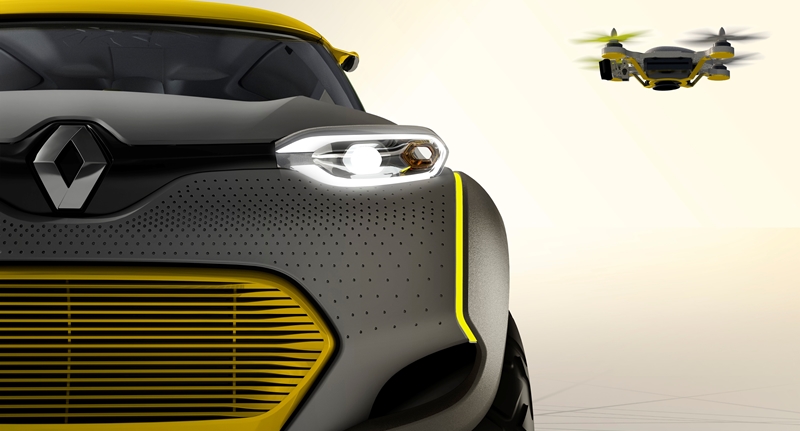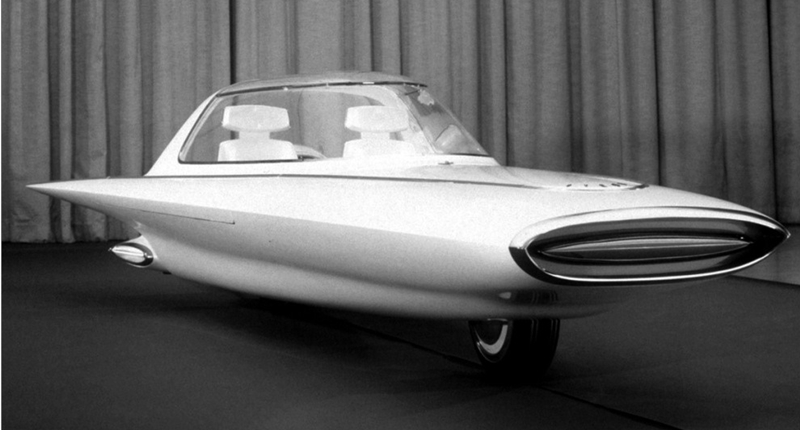OpenAI has launched GPT 5.2, a major model upgrade now available in both the API and ChatGPT. It is described as the company’s most…
5 concept cars that owe their existence to short-lived trends

When designers set out to make a concept car, a couple of things can happen. First off, they can take the sensible route and build something that, barring a few tweaks, will appear on future models in the maker’s line.
That doesn’t mean they’re not exciting though. This year’s Detroit Motor Show highlighted the fact that building plausible concepts can seriously whet the appetite of petrol heads.
Another possible route is to shut the designer in a room and tell them to come up with something based on what everyone thinks is cool right now.
The results of the latter tend to be a little less, shall we say sane, than the former.
And in some instances, the results are cars based on trends that lasted about as long as the designers were trapped in their rooms.
Given the half-crazed nature of some of the resulting concepts that sometimes isn’t all that short a time.
While some of the concept cars we’ve rounded up here are more feasible than others, the trends they were based on mostly seem pretty darn ridiculous with the wisdom hindsight.
1. Renault Kwid

Okay, we admit it might be a little early to call this one given that Renault only debuted the Kwid very recently, but in all seriousness when was the last time you saw someone get excited about an AR drone (beer delivery ones notwithstanding) nevermind launch one from their car?
Apart from giving you the ability to spy on traffic from above, the Kwid features seriously chunky exterior looks and an interior designed to serve as a snug cocoon and inspired by a bird’s nest.
2. Honda Fuya-Jo
Are you the kind of person who hops from club to club and only sleeps when the party’s over (hint: that means never). Then the Honda Fuya-Jo is perfect for you. Or at least it would have been if it had ever held any hope of going into production.
Oh, you’d probably also have to be the kind of person who isn’t really a fan of comfort. First shown at the 1999 Tokyo Show, the Fuya-Jo featured dance club style seats and a dashboard designed to resemble a DJ’s mixing desk and a steering wheel shaped like a turntable. This is what they mean by Japanese reliability right?
3. The Studebaker Astral and Ford Nucleon
Yes we know this entry actually contains two cars, but given that they both placed so much hope in nuclear power, we feel fairly safe lumping them in together. While we now know exactly how very far away from a nuclear powered car we are, the 1950s were a much more hopeful time, as demonstrated by both Ford and Studebaker’s efforts.
The Astral was a one-wheeled, flying saucer-shaped car was pretty much what people thought the future would look like back then.
The Nucleon meanwhile was meant to be powered by a small nuclear reactor in the rear of the vehicle. We wouldn’t exactly call it a looker though.

4. Toyota Fun Vii
Over the past few years, social networks have proven that social media is most definitely not a fad. The idea of drivers connecting with other drivers via social networks with the car in motion never really took off though.
For an example of why that is, you only need to look at the Toyota Fun Vii. The concept featured a massive LED-screen exterior that you could personalise and also came with the ability to connect with other drivers on the road in a this-is-totally-safe-we-promise-you-guys kind of way.
5. Ford Gyron

If car designers in the 1950s had an obsession with nuclear energy, then their early 1960s counterparts obviously had a thing for space. It makes sense too: the Russians had launched Sputnik into orbit in 1957 kicking off its space race with the US.
Small wonder then that we thought we’d have colonies on the moon within just a few years.
And if ever a car looked like it was designed to zip between human colonies in space rather than drive on the road, it was the Ford Gyron One wheel was at the front and the other at the rear like a motorcycle and the car was stabilized by gyroscopes. The two occupants of the vehicle were seated side by side and, when the vehicle was stationary, two small legs appeared from the sides to support it.
While we’ve been to space plenty of times since then, the kind of spandex-clad lifestyle the Gyron was clearly inspired by never materialised.

